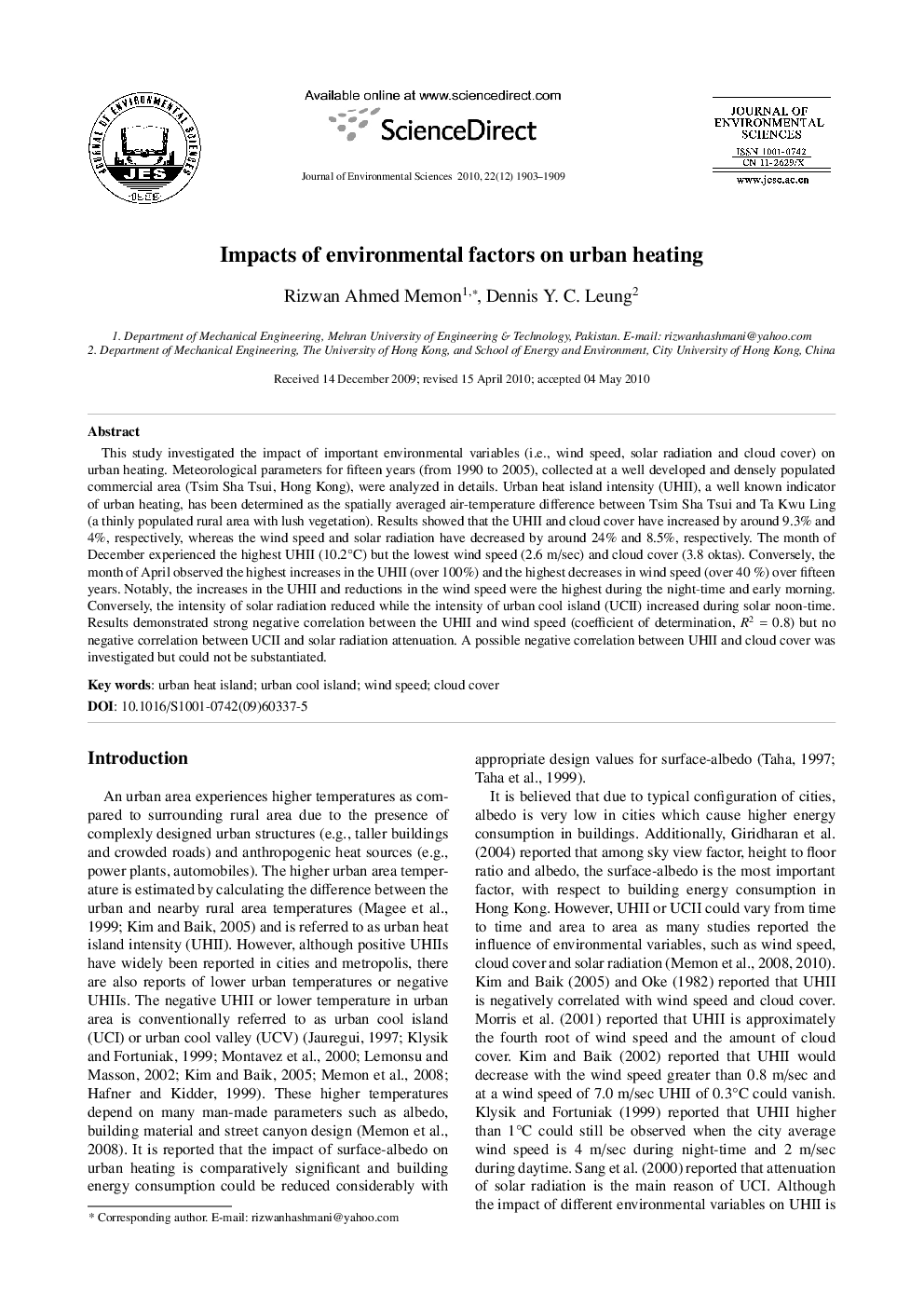| کد مقاله | کد نشریه | سال انتشار | مقاله انگلیسی | نسخه تمام متن |
|---|---|---|---|---|
| 4455899 | 1312535 | 2010 | 7 صفحه PDF | دانلود رایگان |

This study investigated the impact of important environmental variables (i.e., wind speed, solar radiation and cloud cover) on urban heating. Meteorological parameters for fifteen years (from 1990 to 2005), collected at a well developed and densely populated commercial area (Tsim Sha Tsui, Hong Kong), were analyzed in details. Urban heat island intensity (UHII), a well known indicator of urban heating, has been determined as the spatially averaged air-temperature difference between Tsim Sha Tsui and Ta Kwu Ling (a thinly populated rural area with lush vegetation). Results showed that the UHII and cloud cover have increased by around 9.3% and 4%, respectively, whereas the wind speed and solar radiation have decreased by around 24% and 8.5%, respectively. The month of December experienced the highest UHII (10.2°C) but the lowest wind speed (2.6 m/sec) and cloud cover (3.8 oktas). Conversely, the month of April observed the highest increases in the UHII (over 100%) and the highest decreases in wind speed (over 40 %) over fifteen years. Notably, the increases in the UHII and reductions in the wind speed were the highest during the night-time and early morning. Conversely, the intensity of solar radiation reduced while the intensity of urban cool island (UCII) increased during solar noon-time. Results demonstrated strong negative correlation between the UHII and wind speed (coefficient of determination, R2 = 0.8) but no negative correlation between UCII and solar radiation attenuation. A possible negative correlation between UHII and cloud cover was investigated but could not be substantiated.
Journal: Journal of Environmental Sciences - Volume 22, Issue 12, December 2010, Pages 1903-1909